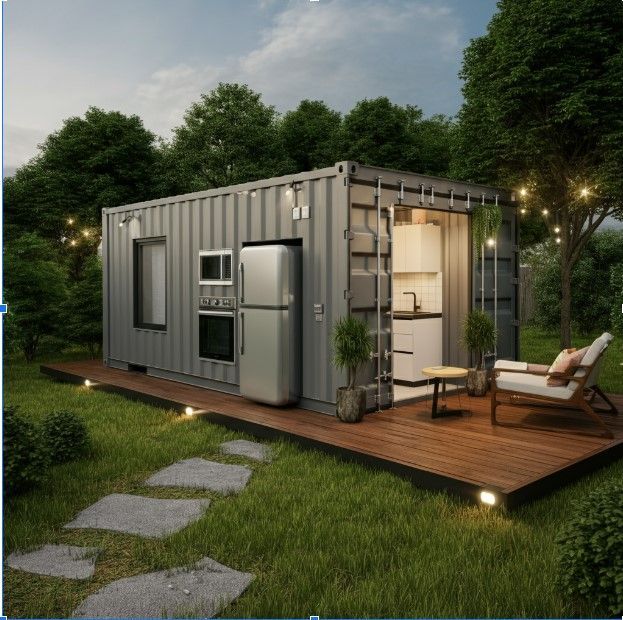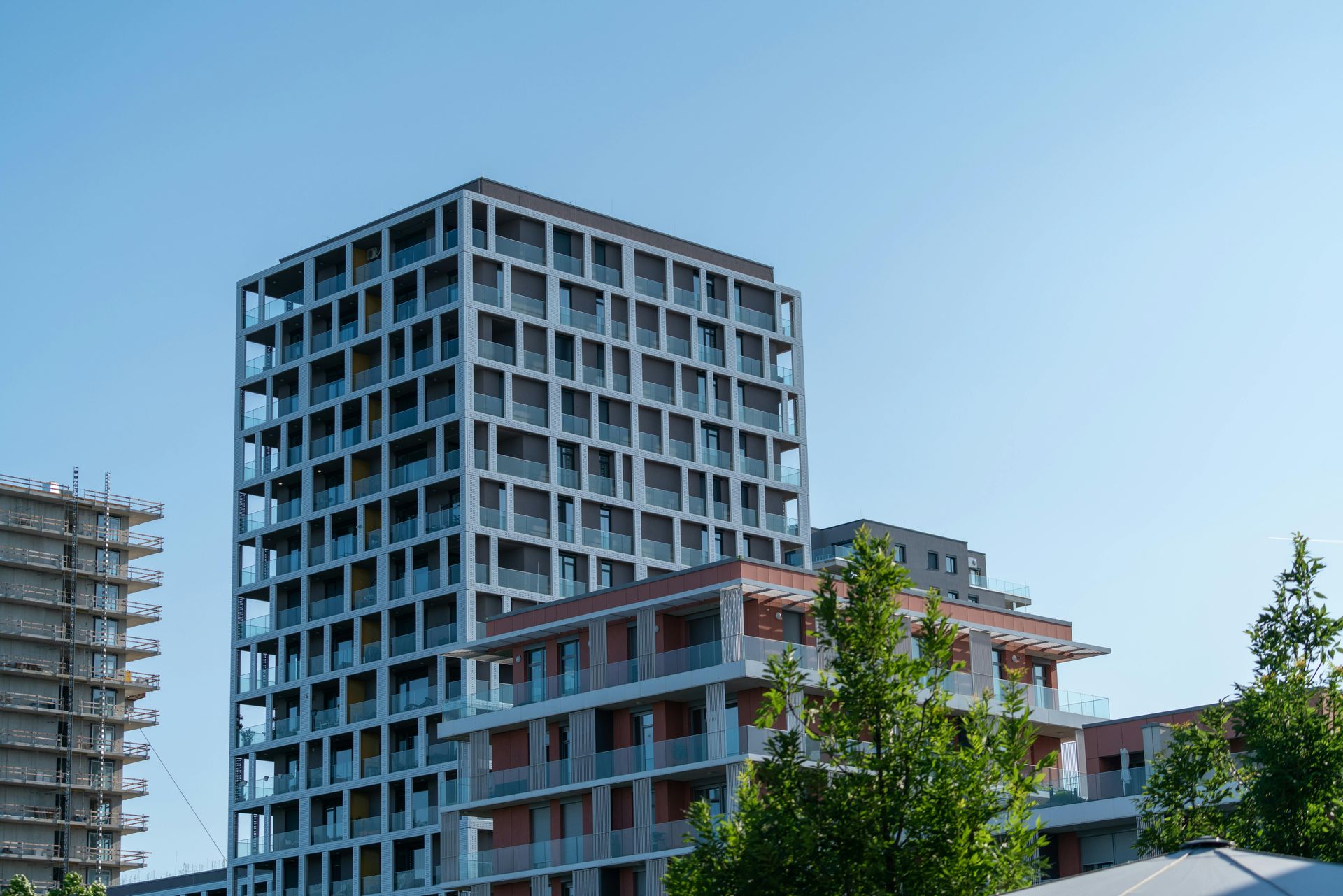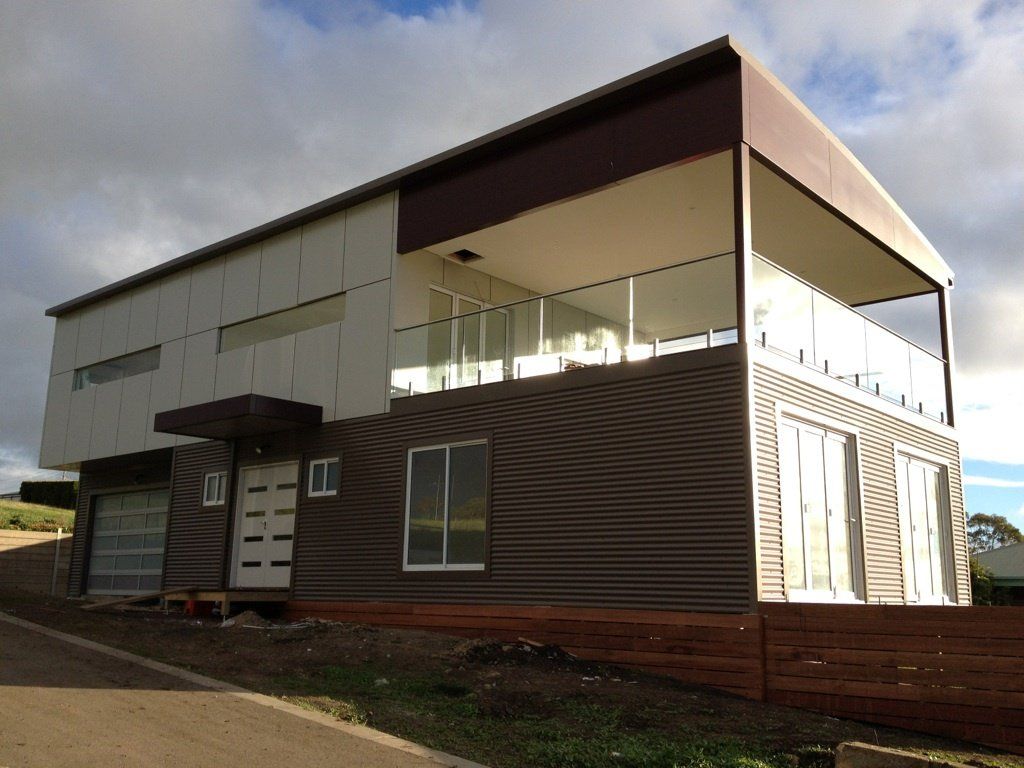A Guide to Shipping Container Homes in Australia: Design, Cost, and Inspiration
https://www.containerhomes.net.au can help make it a reality

Shipping container homes have been making waves in the architectural world, offering a unique and eco-friendly alternative to traditional housing. These innovative dwellings provide a fresh take on sustainable living, combining affordability, adaptability, and a modern aesthetic. In this guide, we’ll explore the intricacies of shipping container home design, cost considerations, regulatory compliance, sustainability features, and some truly inspirational projects to spark your imagination.
Key Takeaways
- Explore the world of shipping container homes, offering unique and sustainable living solutions.
- Design your dream home with customizability in mind and collaborate with local professionals for successful projects.
- Understand costs, navigate building codes & regulations, reduce environmental impact by incorporating green features & be inspired by innovative projects.
Exploring the World of Shipping Container Homes
A shipping container home is an innovative housing solution, often utilizing recycled shipping containers as the primary building material. These container homes offer:
- Safety
- Versatility
- Personalization potential
- Environmental consciousness
They provide a contemporary and eco-friendly living option.
What Makes Shipping Container Homes Unique?
Shipping container homes are distinguished by their:
- Adaptability and customizability, allowing for quick construction times and reliable, cost-effective pricing
- Robust and durable corrugated steel walls
- Standard sizes that offer a sense of uniformity and consistency in design
It’s worth noting that, although ‘one-use’ containers appear environmentally friendly, they don’t represent the most efficient recycling method. Regardless, container homes remain a popular choice for those seeking a unique, sustainable, and affordable living space.
The Popularity of Shipping Container Homes
The growing interest in shipping container homes is driven by their affordability, sustainability, and the desire for unique living spaces. With prices ranging from tens to hundreds of thousands of dollars, there’s a container home for every budget and style. Despite the fluctuations in pricing since their introduction in 2010, container homes continue to gain popularity, thanks to their modern aesthetic and eco-friendly construction.
From compact tiny homes to sprawling, multi-container mansions, the options are endless, and the popularity of these homes only continues to grow.
Designing Your Dream Shipping Container Home
The process of designing a shipping container home encompasses the selection of suitable containers, the tailoring of the design, and collaboration with local experts to realize your vision. From single to double-story dwellings, container homes can be designed to blend in or contrast with their surroundings, offering endless possibilities for creating your dream home.
Choosing the Right Containers from Australian suppliers
Choosing used containers from Australian suppliers is crucial to ensure high quality, durability, and compliance with local regulations. Factors such as the containers’ internal condition, external paint color, and overall structural integrity should be evaluated before purchasing.
Furthermore, considering container sizes is vital, larger ones such as the 40ft high cube containers, provide more cost-efficiency per square meter.
Customising Your Container Home Design
Customising your container home design allows for endless possibilities, from single or multi-story builds to incorporating unique features and finishes.
For example, the Tiny Container Home in Inverloch, Victoria, created by modhouse,is constructed from three 20ft containers connected with links that serve as hallways between them. By embracing creativity and personalization, you can design a shipping container home that truly reflects your individual needs and preferences.
Collaborating with Local Professionals
Working with local professionals, such as architects and builders, ensures your shipping container home meets all necessary requirements and is tailored to your needs. These experts can provide:
- Creative and innovative design solutions
- Ensure compliance with building codes
- Collaborate with engineers
- Incorporate sustainable features into your home
Collaborating with local professionals streamlines the process, optimizes cost-efficiency, and ultimately results in a successful and satisfying container home project. Don’t hesitate to reach out for a free consultation.
Understanding Shipping Container Home Costs
Comprehending the costs related to shipping container homes is crucial, this includes container acquisition, construction expenditures, and any potential hidden costs or savings. The cost of a shipping container home can vary significantly depending on factors such as size, materials, and customization, with prices ranging from $10,000 to $200,000 or more.
Container Acquisition and Transportation
Container acquisition and transportation costs can be influenced by factors such as:
- Size
- Quality
- Availability
- Distance from the supplier to the build site
For example, the cost of a 20ft high cube container in Australia typically ranges from $3,850 to $9,350, with transportation costs ranging from $2,000 to $7,000 AUD for the same container.
These costs should be taken into account during the planning phase of your shipping container home project to determine the final cost.
Construction and Finishing Expenses
Construction and finishing expenses for shipping container homes can range widely, depending on the level of customization, materials used, and labor costs. Factors that can contribute to the overall cost of your container home include:
- Modifications for insulation
- Electrical work
- Windows and doors
- Site preparation and foundation
It’s important to consider these factors when budgeting for your container home.
With a clear understanding of these expenses and meticulous planning, you can guarantee that your shipping container home is accomplished within budget and to your liking.
Hidden Costs and Potential Savings
When considering the costs of a shipping container home, it’s important to account for hidden costs and potential savings. For example, site preparation for a shipping container home typically ranges from $1,500 to $4,500 or more per container. Utility connections can also add expenses, ranging from $1,000 to $5,000.
However, potential savings can be found in reduced construction time, as container homes often have quicker build times than traditional homes, resulting in labor and material savings.
Navigating Building Codes and Regulations
Understanding building codes and regulations for shipping container homes entails a comprehension of zoning and permit requirements, along with inspections and certifications.
Guaranteeing that your shipping container home meets all the requisite criteria and complies with local regulations is vital for the success of the project.
Zoning and Permit Requirements
The zoning and permit requirements for shipping container homes can differ depending on the location, hence it’s crucial to liaise with local councils and authorities to certify compliance. In Australia, planning and/or building permits may be required for the construction of a shipping container home, with specific requirements depending on the size and location of the property.
By familiarizing yourself with local building regulations and obtaining the necessary permits, you can ensure a smooth and successful building process.
Inspections and Certifications
Inspections and certifications are necessary to ensure the safety and structural integrity of your shipping container home, particularly when it comes to modifications and welding. In Australia, building inspections for shipping container homes are conducted in the same manner as inspections for regular construction projects. The inspections evaluate the following aspects of the container home:
- Foundation
- Insulation
- Doors
- Flooring
- Overall structural integrity
These inspections are important to ensure that your shipping container home meets the necessary safety standards.
Obtaining the necessary building permits and adhering to local regulations guarantees the safety and durability of your container home.
Sustainable Living with Shipping Container Homes
Living sustainably with shipping container homes entails:
- Minimizing environmental impact via recycling
- Integrating eco-friendly features in the design
- Repurposing unused containers
- Minimizing the need for traditional building materials
Shipping container homes offer an eco-friendly housing solution, utilising moving containers as their primary building material.
Reducing Environmental Impact
Shipping container homes aid in lessening environmental impact by reusing idle containers and lessening the dependence on traditional building materials. The average lifespan of a shipping container home can range from 25 to 50 years or more, depending on the quality of the container and the level of maintenance provided.
Opting to build with shipping containers not only results in a distinctive and cost-effective living space but also aids in conserving resources and minimizing waste.
Incorporating Green Features
Incorporating green features can further enhance the eco-friendliness of your shipping container home. Some examples include:
- Solar panels on the roof to generate renewable energy
- Energy-efficient insulation to reduce heating and cooling needs
- Sustainable materials, such as reclaimed wood or recycled metal, for construction
With considerate design of your container home and integration of sustainable features, you can establish an interior space that is both ecologically responsible and fashionable.
Inspirational Shipping Container Home Projects
Inspirational shipping container home projects showcase the versatility and creativity possible with this unique housing option. From compact urban oases to sprawling, multi-container masterpieces, these homes demonstrate the potential of shipping container architecture.
Urban Oasis
The Urban Oasis is a multi-level, urban shipping container home featuring a rooftop deck and industrial design elements. This innovative residence combines the convenience of city living with the eco-friendly benefits of container homes, offering a stylish and sustainable retreat in the heart of the urban jungle.
With its sleek lines, modern materials, and unique layout, the Urban Oasis is a shining example of the potential for shipping container homes to transform the urban landscape.
Off-Grid Retreat
The Off-Grid Retreat is a small, eco-friendly container home nestled in nature, complete with solar panels and a custom roof. This cozy getaway offers a serene escape from the hustle and bustle of daily life, allowing its inhabitants to truly connect with the natural world around them.
The use of sustainable materials and energy-efficient features make the Off-Grid Retreat an ideal example of how shipping container homes can blend seamlessly with their surroundings while minimizing their environmental impact.
Summary
Shipping container homes offer a unique and eco-friendly alternative to traditional housing, providing a range of benefits including affordability, adaptability, and sustainability. By understanding the design, cost, and regulatory considerations involved in constructing a shipping container home, and drawing inspiration from innovative projects, you can create a one-of-a-kind living space that meets your needs while minimizing your environmental impact. Embrace the possibilities of shipping container homes and embark on an exciting journey towards sustainable living.
Frequently Asked Questions
How much does it cost to convert a shipping container to a home?
The cost to convert a shipping container to a home can range from $15,000 for a basic unit to up to $400,000 for a luxurious two-bedroom model. However, on average, most people spend between $30,000 and $50,000 for a complete, ready-to-move-in structure.
Are shipping container homes legal in Australia?
Shipping container homes are legal in Australia, but you should make sure to check with your local council before beginning the process as they may have specific regulations you need to follow. Generally, container homes must adhere to the same regulations as traditionally built homes.
What are the main benefits of building a shipping container home?
- Cost-Effective: Shipping container homes can be more affordable than traditional homes because the main structure — the container — is a repurposed item that can be cheaper than new building materials.
- Sustainability: Reusing shipping containers for homes is an example of upcycling, which reduces the need for new materials and minimizes waste, making it an eco-friendly option.
- Strength and Durability: Containers are designed to withstand harsh conditions at sea, making them incredibly sturdy and able to handle extreme weather when properly insulated and maintained.
- Speed of Construction: Container homes can be built faster than traditional homes since the main structure is already built. The modifications and interior fittings often take less time than building from scratch.
- Modularity: The modular nature of containers allows for creative design and stacking, making it relatively easy to expand or modify living spaces.
- Mobility: Although not all container homes are designed to be mobile, their inherent structure allows for relocation if they are not permanently attached to a foundation.
- Unique Aesthetics: For those looking for a non-traditional home, container homes offer a unique aesthetic that stands out from conventional architecture.
- Space Efficiency: Containers can be ideal for creating homes in tight urban spaces where a small footprint is required.
- Security: The steel construction of containers can provide a more secure shell than traditional wood-frame construction.




